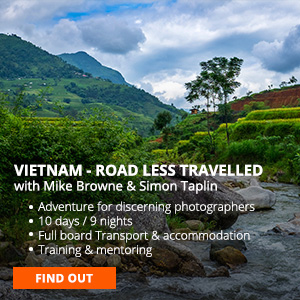How dedicated are you?
The photography monologues explore aspects of photography that come from within the photographer. Having the cameras, lenses etc don’t make you a good photographer any more than having an oven, pots pans and the best ingredients makes you a chef.
I've always 'wanted' to see more of the world, it's one of the reasons I became a professional photographer in the first place. But life got in the way and my dream kept being put aside. Then when my amazing brilliant mother died in 2012 with one of her dreams unfulfilled, something changed. It hit me that I'm not going to live forever and time is precious.
Overnight my 'want to travel with photography' became 'I'm going to'. I got dedicated to making it happen. I spent a year changing my income from selling my time taking photos and concentrated on teaching, writing photography courses and creating photography workshops. It's work in progress but I can see a light at the end of the tunnel.
As with most things in life, it comes from within the person and in this case that’s you.
To become good at photography (read that as ‘happy about your photography’) takes something from the photographer. First you have to ask is this something I Want to do? Or is this something I’m ‘Going’ to do? Do I want to just be better than I am now? Or Do I want to go all the way..? Find out what’s good for you and then get dedicated to making it happen.
Somewhere down the line inspirational photographers like Steve McCurry, Sebastiao Salgado, Annie Leibovitz, Ansel Adams, Chase Jarvis, Brent Stirton and thousands more all got dedication. OK you may not want to be the next Steve McCurry but whatever you want to achieve from your photography becomes much easier when you dedicate something to make it happen. And it's your call as to what that is.
What would dedication to your photography look like for you? It could be putting a couple hours a week aside to clear your head and go practise something new. It could be buying a photography course AND setting aside time to practise what you learnt.
If you’re crazy like me maybe you’ll pack in work for a year, move into a caravan in the corner of a field and spend every day for a whole year reading, practising, getting it wrong, trying again etc. OK I know I’m a bit odd and that won’t work for most people.
Choose what you want then dedicate some time and effort to take the actions required to achieve it. The hardest part is making up your mind if this is a ‘want to’ or a ‘going to’. Once beyond that question the rest suddenly becomes easy.











































